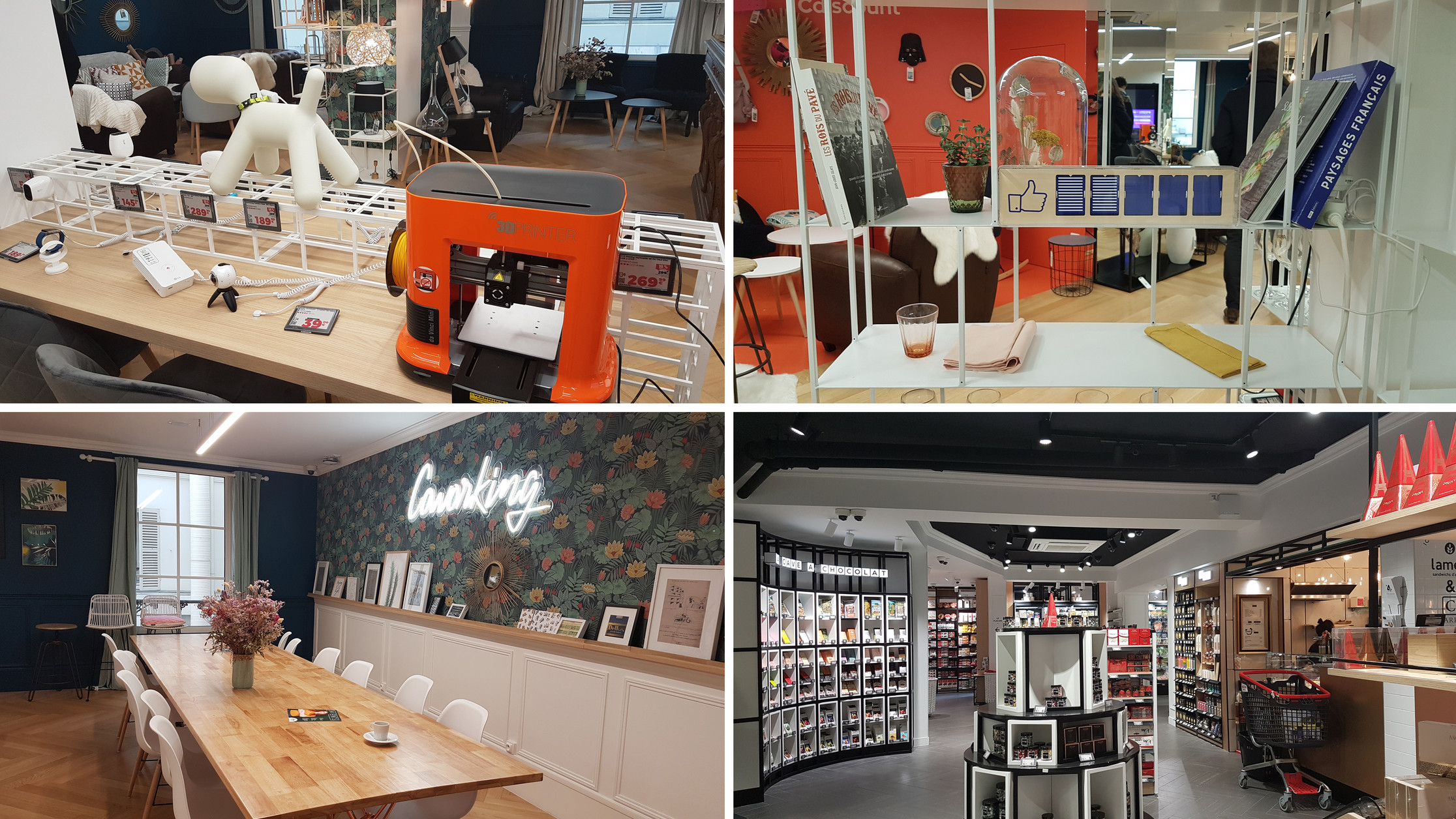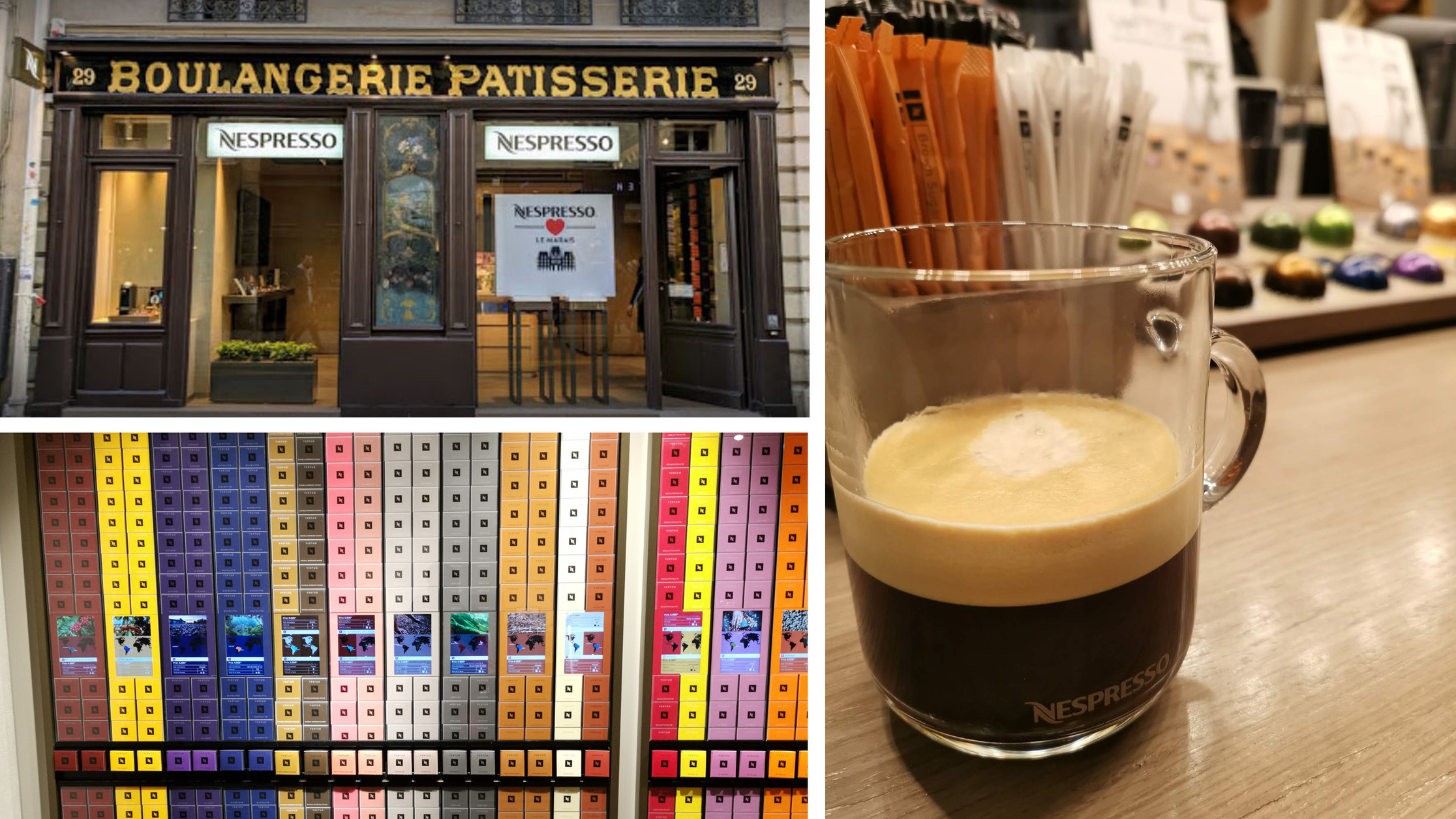At “Retail’s Big Show” the NRF this January, there was a phrase I kept hearing time and again: people saying that “retail wasn’t back, because it never went away in the first place.”
That’s catchy, sure. But the truth is, shops have been closing down in record numbers! Studies keep reporting that consumers are reining in their high street spending and doing more of their shopping online. Stateside, store closures are reaching new highs: Macy’s, Kmart, Toys “R” Us, Sears, Abercrombie & Fitch... are just a few of the brick and mortar locations closing shop doors.
Any silver lining? Well, let’s recognize that outdated business models are finally being disrupted. At NRF, it felt like retail was no longer “catching up” but was now definitely in the game – and playing to win – with remarkable phygital applications. As more retailers go further with omnichannel, digital and physical hybridization, shopping is becoming less transactional, more immersive and fluid. That is leading to more value for consumers, and more intelligent business models for retailers.
But this is only the beginning. What will be the roadmap towards seeing physical retail fulfill its potential in a digital world? Reflecting on both the NRF and the Retail Safari discovery trips the VisionHub team has been taking with Usine.IO, I’d like to take a look at both some of the best practices we’re seeing today in terms of combining physical and digital solutions, and some of the challenges that we might anticipate.
Digital stores: finally some smart ways to combine online and offline!
The battle, today, is that physically going shopping can be time-consuming and energy-sucking. E-commerce can solve many of these pain points (distance, crowds, out-of-stock products, opening times...) but does not let shoppers touch, feel, or try on items before buying. Nor does it scratch the itch for instant gratification. So the physical shop retains a key place in customer journeys.
However, consumers today want faster checkouts, in-store mobile payments, product wayfinding... In a nutshell, they are coming to expect that a brick-and-mortar store should integrate as much as possible of the convenience of digital retail, with enhancements that not only have the “wow” effect but also make their lives easier if they are to still be lured into physical locations.
There are already some stand-out examples of this: at the end of last year, Nike came up with its brilliant Speed Shop in New York, melding online and offline in its new 6-story “House of Innovation 000” flagship. There, tech permeates every aspect of shopping. Nike was able to make the experience enjoyable for all customers, whether they are looking for some “retail-tainment,” or a way to get in and out in a flash.
In the optical sector, Luxottica Group has also been disrupting the traditional retail environment. An innovative digital in-store solution was introduced at the recent MIDO 2019: a virtual interface can now allow customers to explore collections and brands, then virtually try on any model from its catalogue. This was presented along with the “digital showroom” concept: a specially designed space providing immersive experience inside the brand’s world and virtual simulations of Luxottica’s stores.
Also worth mentioning is le 4 Casino, an ultra-connected concept store on the Champs Elysees in Paris. Inside, we find augmented reality displays, giant Picking Walls (with grocery delivery within 24 hours!), a state-of-the-art wine cellar and in-store product mapping. And it’s open 24/7—rare in France.

Inside the 4 Casino store in Paris. Photos: Linnéa Perdahl & Marie-Aude Arrouy
I’ve been able to try out a number of these innovations first-hand, and even if some still present themselves as “proof of concept”, the proof is convincing. As a consumer, the shopping experience was both delightful and convenient.
However, challenges remain, especially in international markets: to be a cashless shopper, one needs an account in some kind of banking or payment system. Even if some countries are well on their way to becoming cashless societies (we’re looking at Sweden, the UK, China...), many low-income households are still unbanked. Japan and Germany also remain cash-dependent anomalies amongst developed countries. Though the African continent is often heralded as a frontrunner in mobile payments, there is still divergence across countries.
Of course, solutions are emerging: in the US, Walmart, in partnership with PayPal, is capturing new revenue streams by tapping into previously untapped low-income segments. In Nigeria, kiosks operated by the mobile provider Paga are filling the gap between being cash and digital.
There’s no doubt that these challenges will need to be addressed and that digital stores will have to go beyond PoC to truly disrupt the sector, but there is a sea change happening. And in that transition, it is also the retail experience which will be greatly enhanced by tech.
New technologies in retail: from transaction to emotion
Moving from the transactional into the experiential world for retail makes more space for emotions. As shopping becomes painless, customers go to the store to experience something new, unique, or personalized. It’s not a necessity anymore: it feels good. As CEO and Founder Daniel Lellouche rightly points out in this NRF roundup, customers want the experience to be meaningful. The store can become a place where they can socialize with communities who share their passions.
Three retailers in the luxury sector are managing to combine online and offline in meaningful ways: Guerlain, TimeVallée and Nespresso. And in the optical sector, I like to mention the Korean brand Gentle Monster.
The Guerlain Parfumeur concept in Europe and Asia uses digital technology and AI, not only to make selecting a perfume easier than ever, but also as a way to dive into the brand’s story: during a personalized digital consultation, a client samples Guerlain’s top creations from the past 200 years. Then an algorithm recommends a signature scent and the customer also gets to customize their perfume bottle!
TimeVallée provides a unique digital omnichannel experience to luxury watch consumers. The boutiques consist of different experiential areas hyper-adapted to client profiles. These hybrid spaces are also “Instagram-friendly” – a win-win strategy augmenting both the visibility of the brand and its value to consumers. As TimeVallée Managing Director Thavy Nano puts it, luxury is “intensifying the conversation with alternative experiences.”
Nespresso also proposes an innovative self-service customer journey, starting outside the door: storefront windows are interactive platforms for brand storytelling. Inside, the experience centers on coffee tasting. On the self-service journey, a customer samples coffee at the bar, drops capsules into an elegant shopping bag and pays at a kiosk. Staff use avatars to identify customers and provide personalized services, from order to payment... all this while the customer sips their demitasse alongside other coffee fans. A shopping experience as smooth as the espresso!
Gentle Monster, the Seoul-based provider of premium eyewear, has created hi-tech stores around the world, each crafted like unique art destinations: in addition to presenting (some) merchandising, each store provides an experience close to an art gallery born from the minds of a dedicated “in-house installation department” and collaborations with some of the most recognized designers. In the words of Taye Yun, the brand’s chief marketing officer, G.M. “approaches its own experiential retail strategy by experimentation”.

Inside the Nespresso boutique in Paris. Photos: Ricardo Davalos & Linnéa Perdahl
These are just a few examples of the innovative stores using technology to provide customized services and a seamless experience. There are so many more, I’ll no doubt come back to this in a future article! The main take-away I’d like to focus on today is that integrated technologies such as AI-based programs, virtual and augmented reality and visual recognition pave the way for a completely new, emotional, ideal shopping experience. Perfect combo for optics and eyewear industry, isn’t it?
Now let’s move on to a crucial question behind all these developments: where are we willing to take these technologies in our stores?
The ideal shopping experience: how far will we go?
Omnichannel and the O2O customer journey was another central topic at NRF 2019 - and also something we’ve abundantly discussed in preparation of Dubai 2020, no later than last week at A.T. Kearney. Digital isn’t just affecting the physical, it goes both ways. Tech visionary Connie Chan dubs this “O2O 2.0”: just like digital sites, physical spaces could soon be personalized to consumers.
While this is far from being the norm, I’m pleased, at least, that companies are finallyfocusing on technology to solve conflicts in the physical space. However, challenges to democratize new technologies remain: not just any retailer can build a 6-story concept store in Manhattan! The costs of new technologies can be prohibitive for the average retailer.
Pop-up stores are one way that retailers can test-drive a new technology or concept before making any long-term commitment, as Olivier Vignaux (BETC Digital) mentioned. Another is kiosks, which can be installed on a permanent basis in the retail space, and provide a smart way to enhance the customer journey – by facilitating order or payment thanks to a fast automated personalized experience – or simply offering a complementary service. This is a solution that VisionHub provides for retailers of all kinds, with a turn-key whitelabel kiosk to integrate an omnichannel eyewear retail stream into an existing space. This creates a way to digitalize the customer experience and enhance the overall service provided, but without retailers having to deal with any of the logistics. For this reason, kiosk solutions are becoming increasingly popular: last year, the industry saw 17.6% growth in the US alone.
The landscape is changing. Retail is no longer catching-up with other sectors in terms of digital innovation: it’s now definitely in the game. And even playing to win, with some remarkable phygital applications. However, retailers will have to play smart if they want to keep the right balance between state-of-the-art technologies and experiential services. Convenience and efficiency are not to be opposed with sensorial and emotional experience: it is hand in hand that they contribute to remodeling the customer journey, benefitting both consumers and retailers.